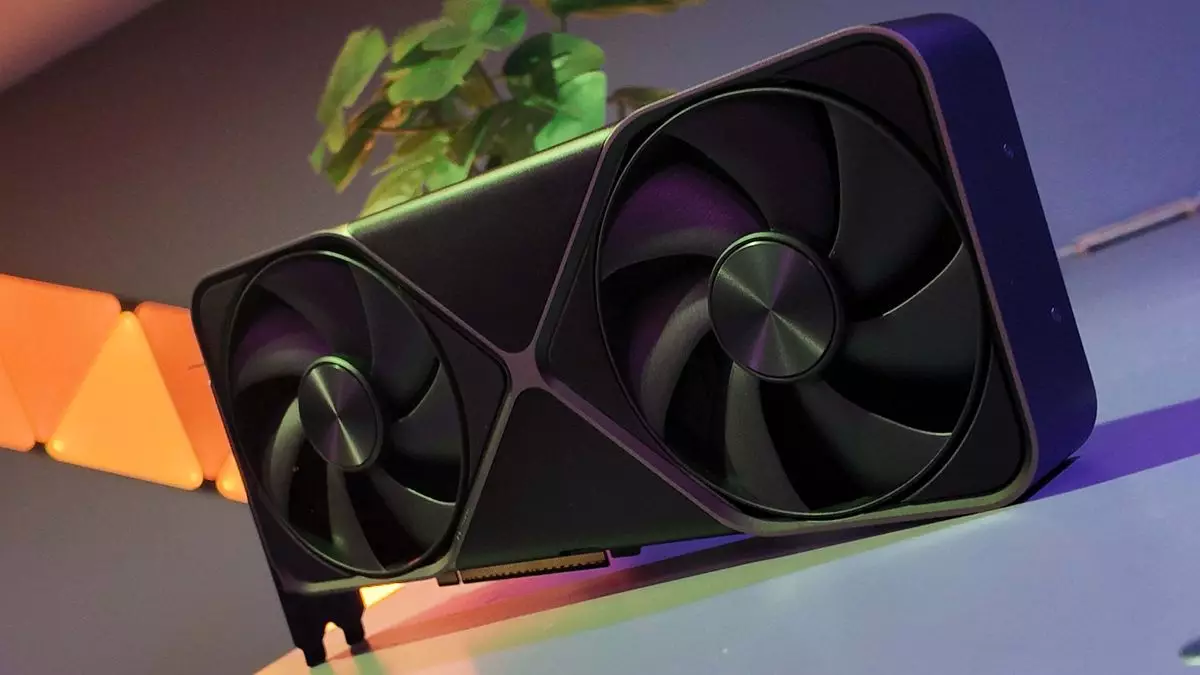The excitement swirling around the recent launch of Nvidia’s RTX 50-series GPUs has captured the attention of gamers and tech enthusiasts alike. The anticipation, the camping out for stock availability, and then the breathless rush when the RTX 5080 and RTX 5090 models finally hit the shelves—these events have become the hallmark of a vibrant, ever-evolving industry. But beyond the exhilarating moments of purchase, the real news lies in the new driver updates that have the potential to enhance experiences across a much broader range of Nvidia graphics cards.
Each new GPU release from Nvidia is more than just a simple product launch; it’s a phenomenon. Gamers worldwide prepare for days in advance, gathering information, organizing schedules, and sometimes even sleeping in tents outside retailers to secure their prize. The recent RTX 50-series launch showcased how exhilarating this experience can be, with eager buyers snatching up limited stock in record time. Once again, Nvidia has demonstrated its ability to create fierce demand for cutting-edge technology, illustrating that their commitment to innovation continues to resonate strongly within the gaming community.
However, the fervor surrounding the launch prompts essential questions about availability and accessibility. As the RTX 50-series rapidly sells out, many gamers wonder how long it will take for stock levels to normalize. Will Nvidia be able to meet the growing demand in an increasingly competitive graphics market? This ongoing concern adds another layer to the already vibrant conversation about hardware upgrades and gaming experiences.
While many focus on the RTX 50-series, Nvidia remains mindful of its existing user base, particularly those with previous-generation GPUs. The release of the new GeForce driver, version 572.16, signals a significant enhancement for a wide variety of Nvidia cards, including the RTX 40, 30, and even 20-series. Notably, the integration of DLSS 4 Multi Frame Generation means users with the RTX 50-series can expect significant frame rate increases, effectively multiplying performance in over 75 supported games.
Moreover, Nvidia has implemented structural changes in its approach to frame generation. These alterations include lower VRAM usage and faster processing times, which enhance the overall gaming experience. This is not just beneficial for the newest RTX models; the update offers enhancements to DLSS, ray reconstruction, and super resolution features for older-generation cards, extending Nvidia’s commitment to performance improvement across its entire lineup.
As gamers with older-generation graphics cards know all too well, the relentless pace of technology advancement can frequently leave them feeling overlooked. However, Nvidia’s new driver offers a glimmer of hope. For those still using RTX 30 or even RTX 20-series cards, enhancements such as beta versions of super resolution and DLAA (Deep Learning Anti-Aliasing) will provide new avenues for performance boosts. This inclusivity in updates illustrates Nvidia’s acknowledgment that a large segment of their user base still relies on these older models, and there’s value in enhancing the experiences of all gamers.
Additionally, while RTX 50-series users benefit from features like ‘Smooth Motion’—which allows frame interpolation at the driver level—the broader implications cannot be overlooked. There’s an evolving standard being established that benefits all users, fostering a competitive gaming environment rather than one that leaves many users feeling obsolete.
Looking Forward
With anticipation swirling around new technology launches and driver updates, gamers are simultaneously excited about the prospect of enhanced performance and cautious about stock availability. While the RTX 50-series represents a significant leap in gaming graphics, Nvidia’s commitment to its previous models marks an essential step towards inclusivity within the gaming community.
Gamers can maintain hope that as the market evolves, so too will the offerings available to them, ensuring that no one is left behind in the race for higher performance. Whether you’re a proud owner of the latest RTX models or a user of older hardware like the RTX 3060 Ti, there’s much to look forward to. As we dive into the gaming experiences that await, the future looks brighter than ever, filled with potent graphics technologies awaiting exploration.

